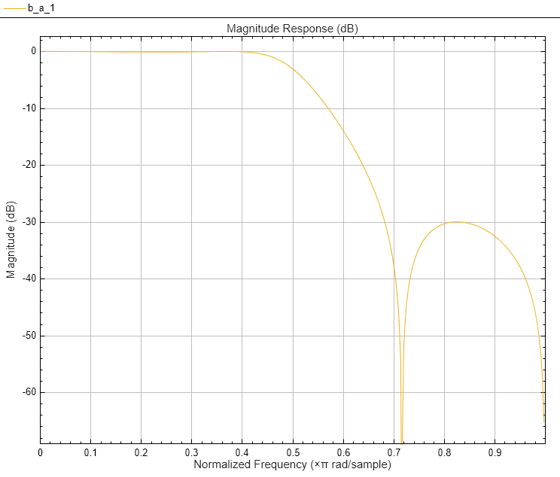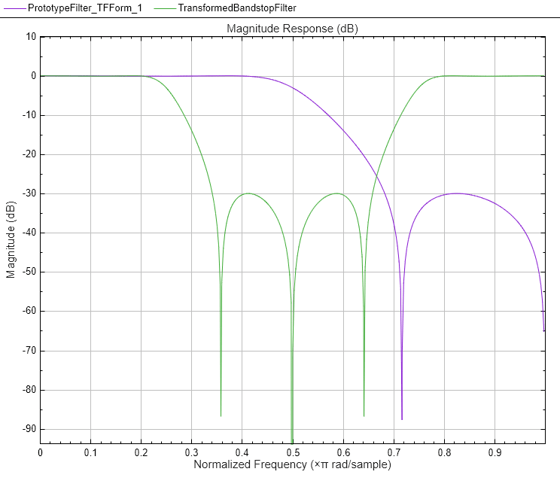iirlp2bs
Transform IIR lowpass filter to IIR bandstop filter
Description
[
transforms an IIR lowpass filter to an IIR bandstop filter.num,den,allpassNum,allpassDen] =
iirlp2bs(b,a,wo,wt)
The lowpass filter is specified using the numerator and denominator coefficients
b and a respectively. The function
returns the numerator and denominator coefficients of the transformed bandstop
digital filter. The function also returns the numerator and denominator coefficients
of the allpass mapping filter, allpassNum and
allpassDen respectively.
For more details on the transformation, see IIR Lowpass Filter to IIR Bandstop Filter Transformation.
Frequencies must be normalized to be between 0 and 1, with 1 corresponding to half the sample rate.
Examples
Input Arguments
Output Arguments
More About
References
[1] Nowrouzian, B., and A.G. Constantinides. “Prototype Reference Transfer Function Parameters in the Discrete-Time Frequency Transformations.” In Proceedings of the 33rd Midwest Symposium on Circuits and Systems, 1078–82. Calgary, Alta., Canada: IEEE, 1991. https://doi.org/10.1109/MWSCAS.1990.140912.
[2] Nowrouzian, B., and L.T. Bruton. “Closed-Form Solutions for Discrete-Time Elliptic Transfer Functions.” In [1992] Proceedings of the 35th Midwest Symposium on Circuits and Systems , 784–87. Washington, DC, USA: IEEE, 1992. https://doi.org/10.1109/MWSCAS.1992.271206.
[3] Constantinides, A.G. “Design of Bandpass Digital Filters.” Proceedings of the IEEE 57, no. 6 (1969): 1229–31. https://doi.org/10.1109/PROC.1969.7216.
[4] Constantinides, A.G.“Spectral transformations for digital filters.” Proceedings of the IEEE, vol. 117, no. 8: 1585-1590. August 1970.
Extended Capabilities
Version History
Introduced in R2011a


